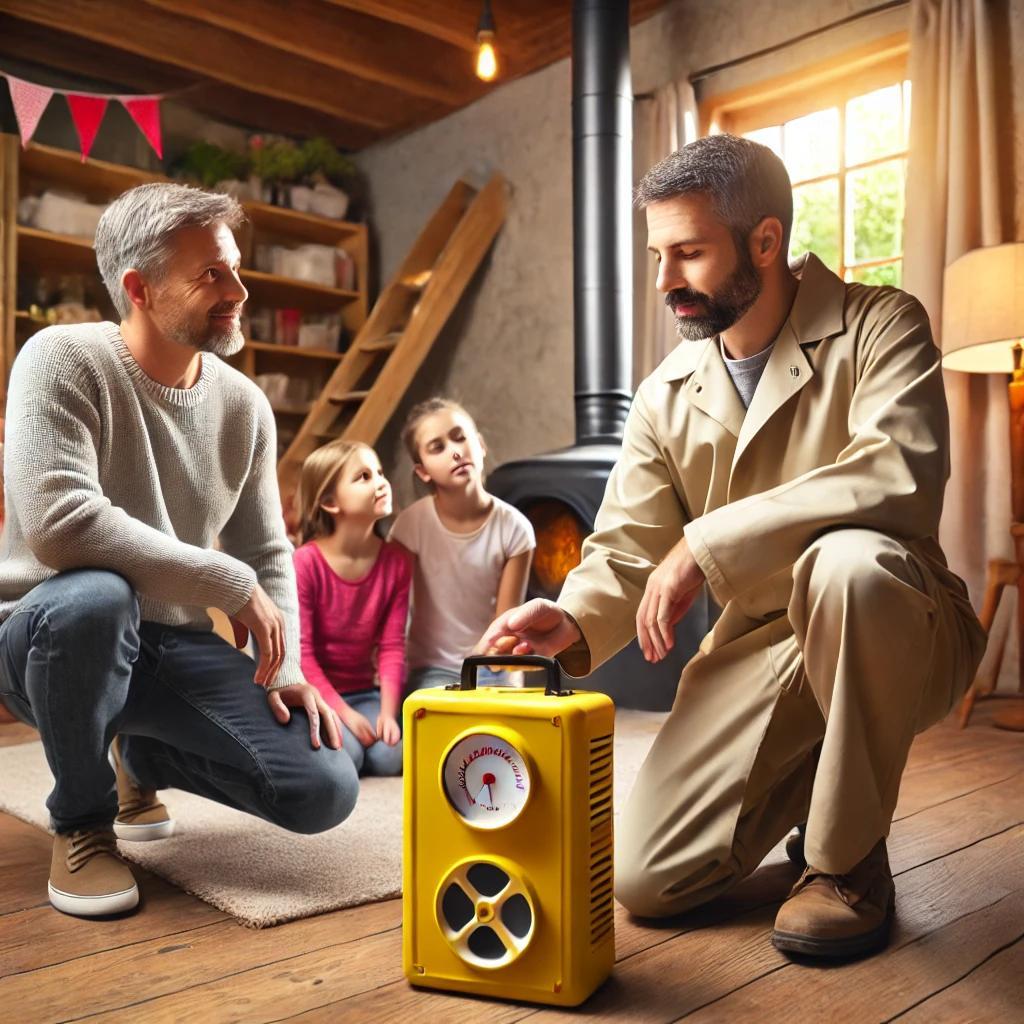Understanding Radon: Essential Tips for a Safer Home

Can you think of a colorless, odorless gas that naturally occurs and presents a threat to health in homes and buildings? If you thought of carbon monoxide, you're correct. But there's another one you should know about: radon.
Radon is more frequently present in homes than many people realize. It’s crucial for homeowners to become informed about the risks of radon and to test their homes to ensure safety.
Here’s a detailed look into radon gas—what it is, where it’s located, its potential health impacts, and what actions can be taken to safeguard your home and family.
What is radon?
Radon is a naturally occurring radioactive gas that is both colorless and odorless. It forms when radioactive elements like uranium in rocks and soil break down. As uranium decays, radon is produced and can travel through air and water to different locations.
Where is radon found?
Radon can move freely because it is a gas and it exists worldwide. In the United States, high levels have been recorded across all states. Levels can vary significantly based on regional geology.
Outdoors, radon appears in lower concentrations in air and water bodies like lakes and rivers. Indoors, it is typically more concentrated, especially in basements and crawl spaces since they are closest to the radon's source in earth materials. Therefore, occupants of these spaces might experience higher exposure levels.
How can radon affect you?
Once inhaled, radon decays into radioactive particles that can become lodged in lung tissues. Over time, this radiation damage can increase the risk of lung cancer, without causing immediate symptoms like coughing. The U.S. Surgeon General states radon is the second leading cause of lung cancer, especially concerning for smokers.
Studies by the U.S. Environmental Protection Agency (EPA) and the National Academy of Sciences (NAS) indicate that radon exposure is responsible for approximately 21,000 lung cancer deaths annually. However, not everyone exposed to high levels will develop lung cancer.
How does radon exposure occur?
Most radon exposure occurs indoors, in homes, and other buildings such as offices and schools. It enters through cracks in foundations, construction joints, spaces around wires or pipes, and other openings. A lesser extent of exposure can occur when radon moves from water to air, although this is not a significant contributor. Some building materials, especially those composed of natural substances, can also emit radon. For example, granite countertops may release low levels, though these are usually not higher than emissions from local rock and soil.
If you’re concerned about radon exposure at home
According to the EPA, approximately one in every 15 homes in the U.S. has radon levels at or above 4.0 picocuries per liter (pCi/L), which contrasts with the average indoor level of 1.3 pCi/L.
Testing your home for radon levels is the first step if you are concerned. Home detection kits are available in short-term, for several days, and long-term, for three months or more, formats. It is advised to test all living spaces under the third floor, including new homes, even if they are labeled as "radon-resistant."
Professional radon experts can also conduct testing if you prefer not to do it yourself. The EPA's website offers resources to find testing kits and certified professionals for assistance.
What to do if your home radon levels are high
If testing reveals elevated radon levels, confirm with a long-term test. Persistent high levels require action. While sealing cracks can help, it is often insufficient alone. One effective strategy is a sub-slab depressurization (SSD) system, which uses fans to pull radon from beneath the foundation and vent it outside, away from openings.
Active soil depressurization (ASD) is another effective method. This involves capturing radon from the soil before it enters the building. ASD systems vary in complexity and are cost-effective, operating with fans that consume minimal power.
Hiring a qualified contractor to install mitigation systems and perform necessary repairs is recommended for safety. Proper setup prevents additional safety hazards. Referrals can be found through the EPA or property management services.
For more information
Radon may not be well-known, but its potential health risk is significant. To access more information, the EPA website offers extensive resources including guidance and referrals about managing radon impacts in your home.





